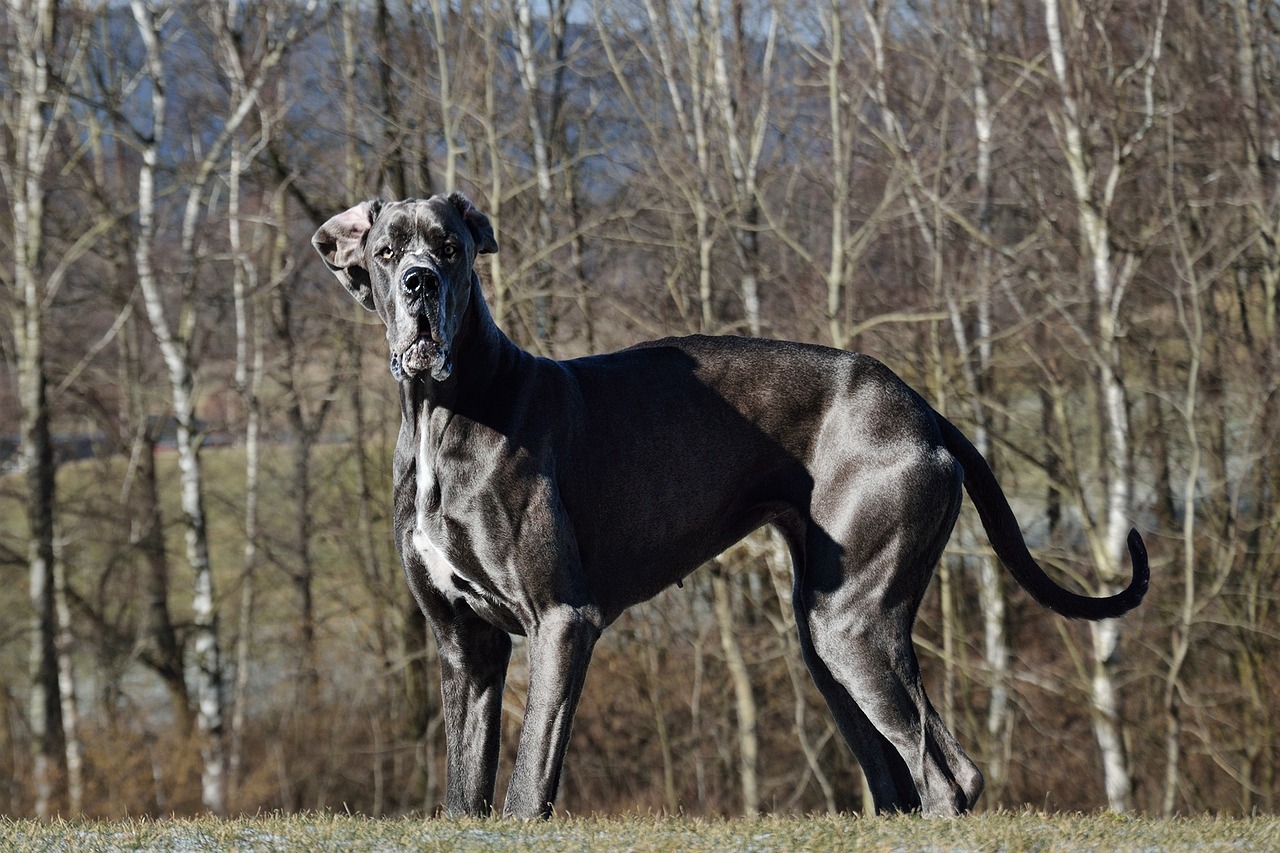Who hasn’t been mesmerized by the sight of a giant, majestic dog that’s also as gentle as a puppy? Owning a Great Dane is a unique experience, filled with love, companionship, and curious stares wherever you go 🐾
But before you open your heart and home to this gentle giant, it’s important to understand the details of the breed, which requires more than just admiration. After all, a dog of this size comes with responsibilities and challenges that must be approached with care and affection.
What is a Great Dane and why is it so special?
Also known as the German Mastiff, the Great Dane is one of the largest dog breeds in the world. Despite the name, the breed originated in Germany, where it was originally bred to hunt wild boars. Over time, their majestic appearance and gentle nature won over families worldwide.
Their size is what grabs attention. An adult can stand over 32 inches at the shoulder and weigh up to 200 pounds! But don’t be intimidated—these dogs are incredibly affectionate, calm, and loyal, earning the nickname “gentle giants.”
If you’re looking for a loving companion who enjoys being close to the family, the Great Dane could be perfect. However, they do require space, constant attention, and specific care.
Let’s explore everything you need to know about welcoming a Great Dane into your life.
1. Understanding their size and space needs
The first step is understanding that this isn’t a dog for small spaces. A Great Dane needs room to move around comfortably. While they’re not overly active, their size alone requires ample space.
- Ideal environments: houses with large backyards, farms, or open areas.
- Avoid small apartments or cramped spaces without proper ventilation.
- They’re not destructive, but their size can lead to unintentional accidents.
It’s possible to raise a Great Dane in an apartment, but it will require daily long walks and a well-organized interior space.
2. A balanced diet for a healthy giant
Feeding a Great Dane is a task on its own. Due to their large size, they require a well-balanced diet rich in nutrients to maintain their health and physical structure.
- Choose high-quality dog food formulated for giant breeds.
- Avoid excessive carbohydrates or homemade foods that can lead to obesity.
- Divide meals into 2–3 portions a day to prevent bloating.
Always provide fresh water and, if possible, consult a veterinary nutritionist to ensure the diet is appropriate.
3. Health concerns and common conditions
Despite their robust appearance, Great Danes are prone to several genetic and joint-related conditions. Regular health care is a must.
- Hip dysplasia and gastric torsion are common in the breed.
- Frequent vet check-ups are essential.
- Weight control and moderate exercise help protect the joints.
With proper care, the average lifespan of a Great Dane is 8 to 10 years. And while it may seem short, each year is filled with loyalty and joy.
4. Temperament and socialization
This giant dog is incredibly sociable. They love being close to family and often forget their size, trying to sit in your lap or curl up on the couch 🐶
Early socialization is key to a well-adjusted Great Dane:
- Expose them to different people, animals, and environments.
- Avoid leaving them alone for long periods—they thrive on companionship.
- Though calm, they can develop separation anxiety if neglected.
Positive reinforcement works wonders with this breed. Gentle, consistent training leads to a balanced and happy dog.
5. Exercise and mental stimulation
Contrary to popular belief, Great Danes aren’t hyperactive. In fact, they prefer short walks and long naps by your side.
- Daily 30-minute walks are enough for their physical needs.
- Avoid high-impact activities during puppyhood to protect their growing joints.
- Interactive toys and basic commands help keep their minds sharp.
The key is respecting their limits and avoiding activities that could strain their joints or spine.
6. Grooming and daily care
Even though they have short fur, Great Danes shed a fair amount and need regular brushing. Plus, they tend to drool, especially after meals or when excited.
- Brush them at least twice a week to remove loose hair.
- Wipe drool regularly to maintain cleanliness.
- Monthly baths are usually enough unless your vet advises otherwise.
Nail trimming, ear cleaning, and dental hygiene should also be part of the care routine. A clean dog is a happy, healthy dog!
7. Is a Great Dane the right dog for you?
Yes—if you’re ready to provide space, love, and dedication, having a Great Dane is one of the most rewarding experiences 💙
- They’re loyal, calm, protective, and incredibly affectionate.
- Best suited for families who spend time at home and enjoy big dogs.
- Despite the care required, their presence transforms your home.
More than just a pet, a Great Dane becomes a true family member. That’s why bringing one into your life should be a conscious, love-filled decision.
Conclusion
The Great Dane is more than just a big dog. It’s a loyal, sensitive, and lovable companion who requires care that matches its size. Having this gentle giant by your side means sharing unforgettable moments filled with affection, presence, and mutual respect.
If you’re charmed by this breed, prepare your home and heart. With the right environment, a balanced routine, and lots of love, your Great Dane will be a lifelong friend. Because when it comes to canine love, size truly does matter ❤️
